Table of Contents [show]
Simplified Battery Safety
by J. C. Martin, III
Introduction
It is sometimes confusing for new vaping enthusiasts whether or not their coils are safe for their batteries. Here is a simple rule: If you calculate your coils’ draw in Amps to be less than the Amps of your battery, they are safe. Any ohms reading under 1, or sub-ohm, is worth doing some calculating to prove its safety. Of course, not all sub-ohm coils are dangerous. When using batteries with only 10 Amps, your risk can be increased with coils, because their amperage draw at sub-ohm levels can easily calculate to 12 Amps.
My own coils are usually very safe, because I vape with 2500 mAh 18650 batteries that produce 35 Amps. My sub-ohm coils usually calculate to 11 Amps, which is lower than 35 Amps of my batteries. The more information you read about ohm’s law calculations, the easier and simpler it becomes. If you want to make sure your coils are safe for your batteries, read information throughout Spinfuel’s Features category, which includes articles and tutorials for battery safety through eliquid primers. Use the calculator here on Spinfuel to calculate the Amps of your coils. This information is the most important for users of mechanical mods with rebuildable atomizers. You will need a vv/vw mod that shows coil resistance in ohms to do this, or an inexpensive ohms reader. It is best to use both. Test your coils with the reader, then calculate the amperage draw of the build. You can then heat them with a mod to check the reading before wicking the build.
It is safest to use batteries with higher Amps for coil building. 30 and 35 Amp batteries are far safer than 10 and 20 Amp batteries for DIY (do it yourself) projects. The lower the resistance of the coils, and the lower the Amps of your batteries, the more danger you risk. If your coil build calculates to 12 Amps, it is unsafe for a battery that only discharges 10 Amps. Is it safe, in general, to build coils for 18350 batteries? Not really. If you do build coils for smaller batteries, remember to do the proper calculations to ensure your safety. To increase the resistance of a coil, add wraps to it. A five-wrap coil has less resistance than a nine-wrap coil when using the same wire. Always do your calculations. I suggest using 18650 batteries with 25 Amps or more on their label to more easily remain safe.
If you have specific questions on the batteries you want to use with the coils you would like to build, I suggest posting your exact information in our comment section below, we’ll do our best to help address your concerns. If you find this takes too much time, get a personal vaporizer that comes with both the atomizer and the battery in a single starter kit to vape with, and refrain from building and vaping with your own coils until you can check your ohms calculations for battery safety properly.
Ohm’s Law Basic Calculation Formula
Current (Amps) = Voltage / Resistance (ohms)
Example
I have two Clapton coils installed in a Cylapex Gate RDA. Their combined resistance is 0.38 ohms. Sending electricity to them at 40 watts shows 3.89 volts. According to the ohms calculation from our Ohms Calculator page, the Amps my coils are drawing are 10.24 Amps. The mod I am using uses two 18650 batteries which produce 35 Amps a piece. Because 10.24 is lower than 35, the coil build is safe.
Thoughts on Above Example
Not always have I built a coil that worked safely, and this is why: I wrapped two 18 gauge Kanthal coils, five wraps a piece, and the ohms resistance was very low. This can be deceiving, because people can think that when the wire is larger, the resistance increases. It does not. The larger wire increases the ease of electrical flow, causing less resistance. At 0.01 ohms, my IPV4s would not fire a dual 18-gauge coil build. It displayed ‘Low Resistance.’ Thank heavens. That is why doing calculations is so important. Had I fired these coils with an 18650 mech mod, a battery could have easily ruptured.
You simply do not want to over-power a lithium battery, and it is not too difficult to do. I suggest starting out with 28 gauge Kanthal and an ohms tester, for safety. Also select 18650 batteries with high Amps, like 25, 30, or 35. This becomes extremely important with mechanical mods, as they often have no safety chip to keep from activating coils with resistance low enough to cause an explosion. Always calculate the Amps of your coils when vaping with a mechanical mod, and make sure their Amps are less than the output of the battery. If the battery says 35A on it, a coil build drawing 12 Amps is safe for vaping at 40 watts.
Included Coil Photos and Thoughts
I built and tested some coils specifically for this review. The coils in the following photos are adaptations of dragon nano coils, inspired via RipTripper’s videos on YouTube. The coils are conical. One of them is larger in diameter and used as a chimney coil, though it has Kendo cotton installed in its center for heat reduction. The other two coils are smaller in diameter, with cotton wrapped not only around the coil, but on the bottom and not the top. This wicking method shoots vapors out from the coil much like the smoke of a fire-breathing dragon’s nostrils, hence, “dragon coils.”
The wire is 22 gauge Kanthal. This is a wire considered to be larger in diameter than most Kanthal. It gets hotter; can handle increased watts; and provides for larger amounts of cloud production in less time. Of course, I tested the coils for amperage draw and calculated the draw to be 14.6 amps. As this is lower than 35 amps, which is what is on the side of my 18650 2500mAh nxJo batteries, this build was safe to vape with. Larger diameter Kanthal leads to lower resistance, so I was happy these coils were safe to use. I used the coils below to vape at 4.09 volts, 14.6 Amps, 0.28 ohms, and 60 watts. I usually vape with two 26 gauge Kanthal coils at 29.5 watts, however this build was very impressive, indeed. The first picture shows the Zorro RDA 22 gauge Kanthal build, wicked and activated.
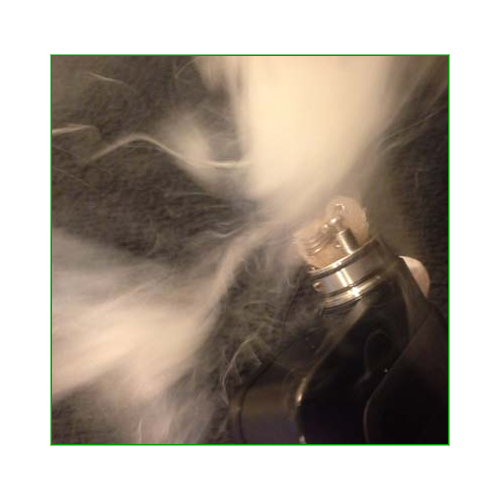
The next photo shows the wire and pliers I used for the 14.6A coil build.
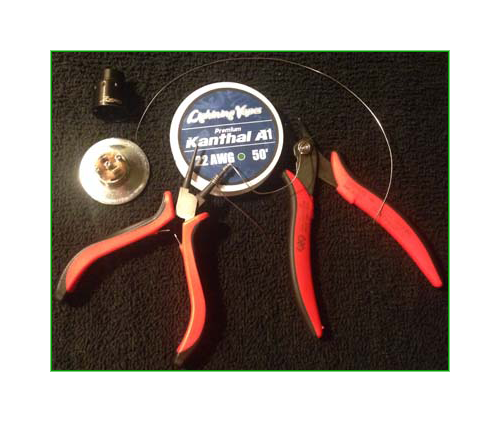
These next two photos show the coils as they are installed in the base of the Zorro RDA. The photo on the left shows the build’s ohms calculation.
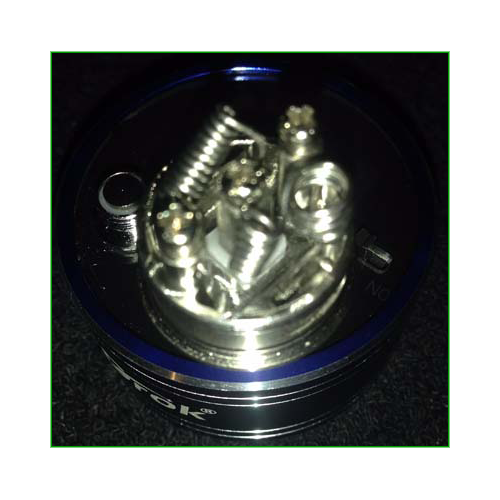
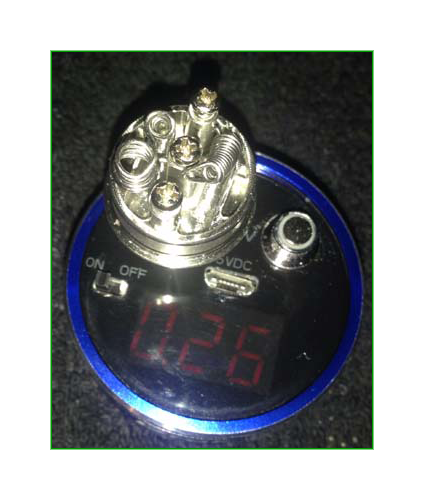
The next two photos show the build’s readings at 40 watts, as well as the coils heated up before their wicking.
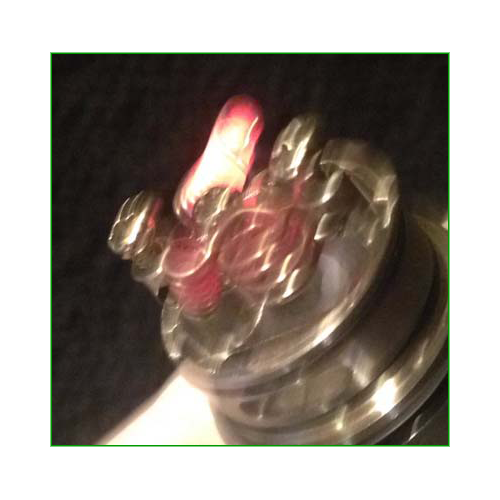
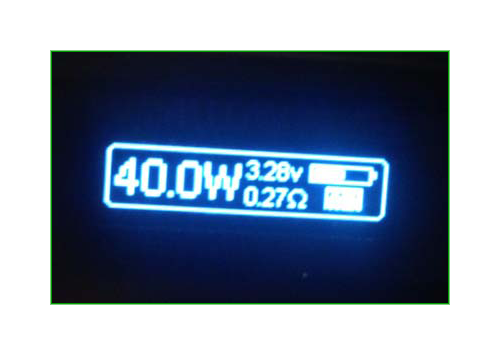
These last two photos show vape production as well as the setup ready to go. The coils with a small diameter have Kendo Japanese organic cotton wrapped around and under them, to shoot the evaporated e-juice from the coils. It may be hard to see in the photo, however I was impressed with the way these coils worked.
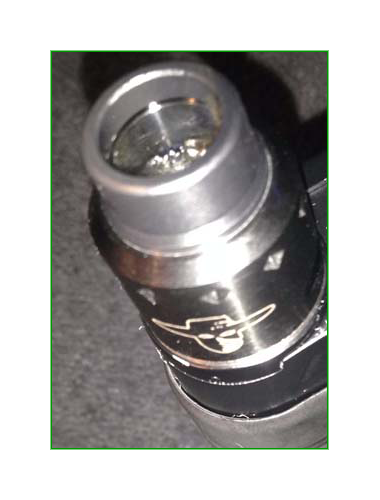
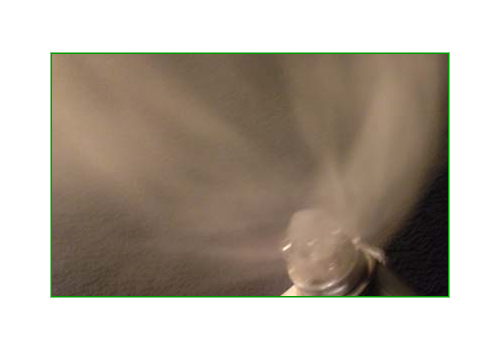
Some Thoughts on TC Devices
When using more than one kind of device, be cautious when cranking up your watts. A TC device is a temperature controlled device. One example is the Joyetech eVic Mini. TC devices are possibly the most intelligent way to vape, however it should be noted that they are not the exact same in nature as vv/vw mod devices with coil builds. The exact same flavor production from a TC device can occur at a completely different wattage choice with a vv/vw device. In other words, when you find your sweet spot with one device, do not expect the same results with the same wattage settings on a different device.
In general, with a TC device, you may set your watts up to 50 or 60 watts for the most desirable vapor production. A highly similar cloud is produced at only 30 watts with a dual coil build on a vv/vw mod. For doing calculations with various devices, see the Spinfuel Ohms Calculator. I have checked the calculator by hand, and it is accurate. To read additional information on Ohm’s law, check out the Spinfuel’s battery safety page. When vaping with a coil build and a vv/vw mod, consider 26 gauge Kanthal coil builds and choosing settings as low as 20 watts and no higher than 50 watts. I prefer 29.5 watts with 26 gauge Kanthal coil builds. If I vape with Clapton Coils or other specialized coil builds with lower resistance, I will sometimes vape at 40 watts. Always remain as safe as possible. No one wants any batteries to explode.
Conclusion
Most 7-wrap, 26 gauge coils are safe for 18650 sized batteries. You basically run into danger when using larger wire with smaller batteries. 35 Amp batteries with 26 gauge Kanthal coils are usually safe –always calculate the amperage draw of your coils before vaping. It is not only fun to see your ohms reading, it is a necessity to battery safety, which is a necessity, indeed. We hope these words have cleared a few things up for you. Thank you for reading and vape on.
J.C. Martin III




